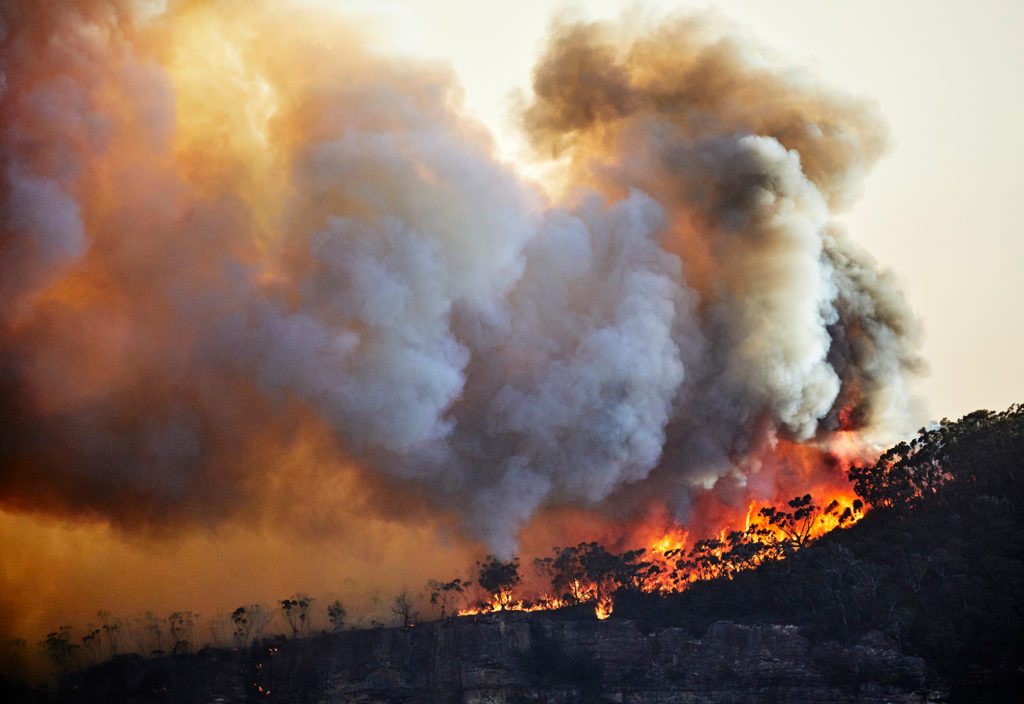“To prioritise other goals over this urgent environmental issue would be like rearranging deck chairs on the Titanic.”
The United Nations’ 17 Sustainable Development Goals are regarded as a blueprint for achieving a better future for all.
However, Lara Harland, Senior Consultant at EnviroEngineering Solutions in Brisbane and Chair of Engineers Australia’s Environmental College, believes tackling climate change must be the number one objective.
To prioritise other goals over this urgent environmental issue would be like rearranging deck chairs on the Titanic.
“Unless we address climate change, we can’t achieve any of the other goals,” she said.
“If we don’t stop the ship from sinking, it doesn’t matter how much effort we put in to other areas, it’s going to go down.”
Fast-moving challenge
Harland was part of a panel discussion on climate change at the World Engineering Conference (WEC) in Melbourne, which was held just weeks before devastating bushfires tore through parts of NSW in December last year.
The fires have served as another reminder of the urgency of climate change action, says Harland, adding that engineers have a vital role to play in building a risk assessment model.
“Even if we stopped all emissions today, we’ve still got a 20 per cent chance of our current economic social systems collapsing due to climate change,” she said.
“I think that was a really important point that came out of the [WEC] workshop. Given that it is such a high-risk thing, we need to be putting processes in place to look at these risk scenarios and come up with some better plans to manage situations, such as bushfires, as they arise.”
She added that the playing field is constantly changing, which means “we can’t just assume what worked even 10 years ago is going to work now”.
“It is going to keep changing at a rate that most of us can’t really comprehend.”
Building a model for risk
How can engineers build a risk assessment model for a such a rapidly changing challenge?
Harland suggested using the precautionary principal, which is a strategy to cope with possible risks where scientific understanding is incomplete.
“We’d need to look at the worst-case scenario and what we would need to do to manage that,” Harland said.
“Then we’d work backwards on different scenarios to put processes in place.
“As an example, if supermarkets have a two-day supply of food and something happens and road access is cut, what can we do to plan for this? These are the types of things that we need to be looking at much more closely.”
The role of engineers
Harland said that while engineers play a central role in addressing climate change, they are “just one cog in the wheel”.
“It can be frustrating, because it takes the will of a lot of people and organisations to get the change happening. We might have the solutions – and we definitely do – but if no one is willing to implement those or move them up as a priority, it is really hard to get them happening,” she said.
Harland believes engineers should go to the heart of the matter when explaining the effects of climate change.
“We’re putting together some training for all engineers and we believe the most effective way to explain the risk around climate change is make it personal,” she said.
Harland points to resources from the ABC, which allow users to input their age to see how temperatures have changed since they were born.
“If you make climate change personal, rather than abstract, people can really connect with it,” she said.
“You can be sitting outside on a beautiful day and easily think, ‘Oh what’s wrong with the environment?’. We should also remember that some of our cities have been impacted directly the bushfires through smoke pollution, and I think this has created even greater concern, because it is more tangible for everyone.”
Running out of time
While recent cooler conditions have provided a respite, fires fuelled by record-breaking temperatures and months of severe drought continue to burn across parts of NSW, Victoria and South Australia.
Harland said they are a tragic reminder that time is running out.
“The environment and the systems are changing so much,” she said.
“Regrowth will begin but, in another 10 or 15 years, there could be another scenario where the conditions are right for disaster, and then the environment just never gets its chance to regenerate.
“Pretty much everything that’s been predicted is happening and it’s scary.”
If you’d like to donate to bushfire recovery, click the button below to see a list of charities and agencies helping with relief efforts.
